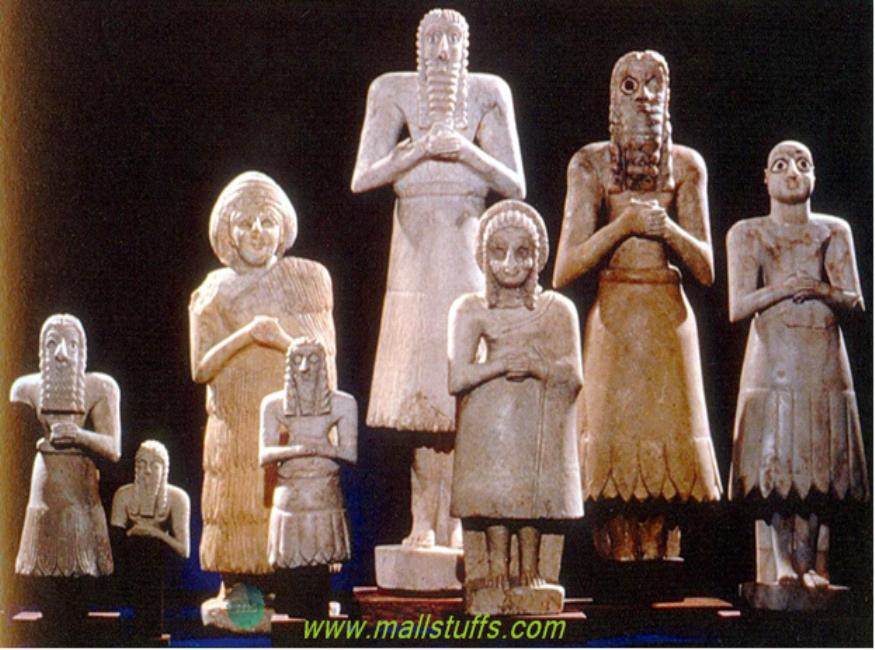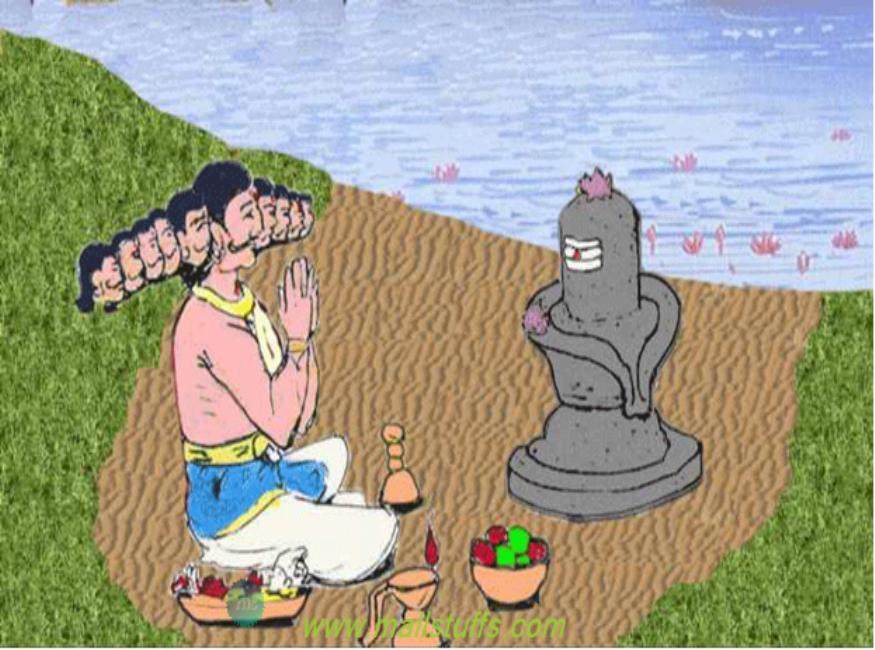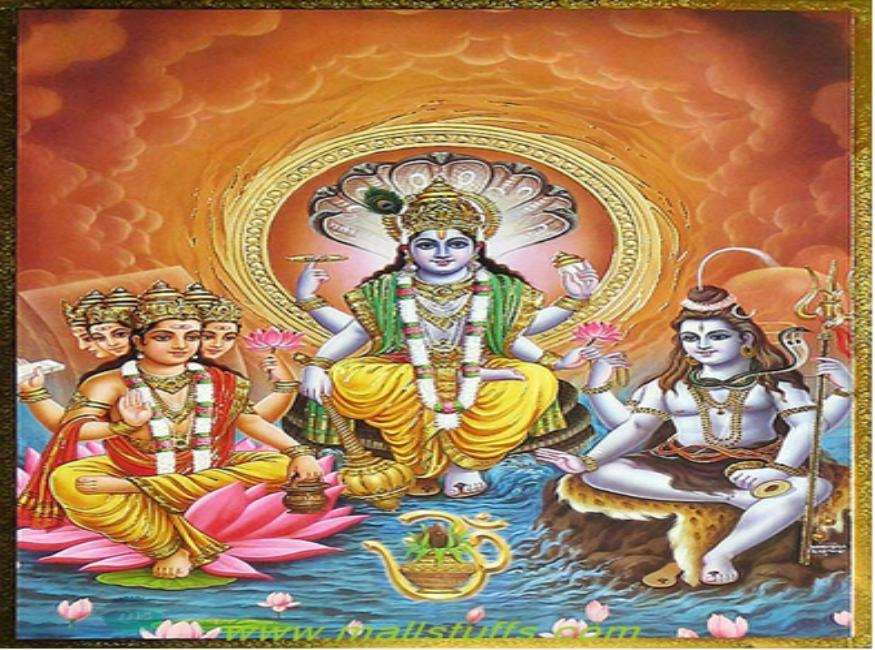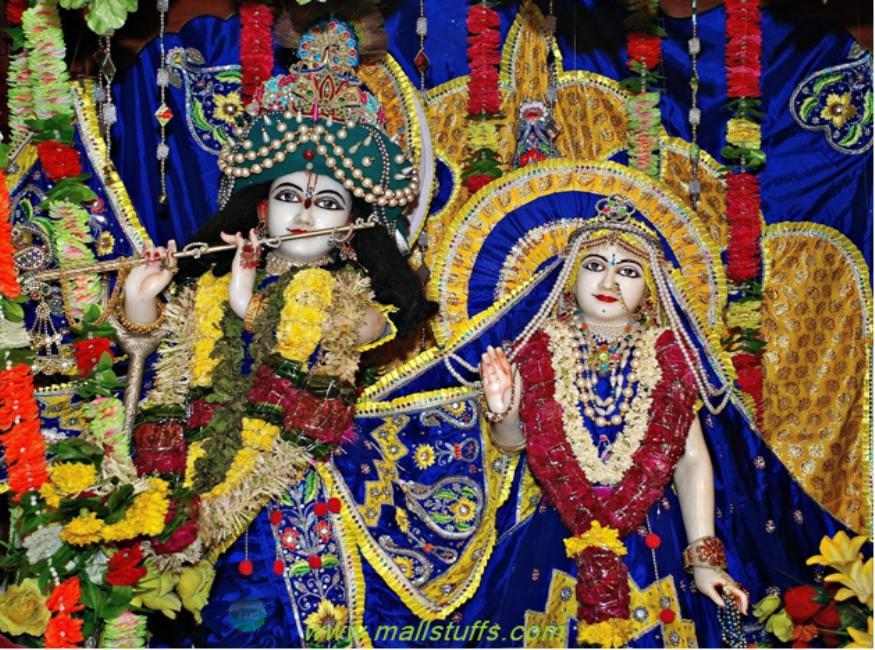
Why Idol worship in hinduism
In various post across the internet, I have often seen many posts against idolatory and thus, calling Hinduism a pagan religion and blah.. blah.. blah.. etc.So, in this post, I would be giving more than fifteen reasons on why there is nothing wrong in idol worship in Hinduism. Before going though the reasons, let us go through the history of idol worship.
History has proven that the most primitive of all religions including Hinduism (other being Mayans, Zoroastrians, Sumerians etc) worshipped idols. So, most of the Philosophers has laid down the following philosophy behind the rise of other religions. One of the philosophers said that
“In olden days, many people in Middle East and other parts of the world used to worship idols. (Example Mayans, Zoorastrians, Hinduism etc). In that time some clever people who had a different perspective started abrahamic religions (especially Judaism, Christianity and Islam) to stop that practice. Founders of those religions used some tactics like god forbidden idol worship, god will get angry if you pray to idols, god will send you to hell if you pray to idols etc. using these tactics they started converting people and those who resist conversion were either branded as idolaters or killed by the followers of abrahamic religions.”

Idols of Sumerians god
First of all, Since I am against blasphemy of any religion, I found this statement little offensive but I wanted to prove the point that the idol worship is most primitive form of worship and also that almost everyone in this world use some kind of image to worship god either physical image or mental image. So, without understanding the concept of idolatry in Hinduism, Don’t try to simply find faults in Hinduism.”
Having said that, now let us see the reasons behind idol worship in Hinduism:
1) Idol worship is a way of acknowledging the omniscience and omnipresence of God. If God is omnipresent, then everything in the universe, including the idol one worships, is filled with His energy and presence.
For Ex: If you want to remember anyone, then it’s difficult to remember him directly.But if you have his image (Photo), then you quite easily remembers him and also the various incidents you have shared with him.
In idol worship the approach of a devotee is much the same. He ascribes a particular form or image to his personal God and gives Him as much love and respect as he would give to God Himself.
This statement has been beautifully explained by Swami Vivekananda, Video for which can be seen below:
Why Idol worship is not wrong-Swami Vivekananda <https://www.mallstuffs.com/Videos/ViewVideo.aspx?VideoId=10241&VideoType=Spiritual>
2) Idol worship gives immense freedom to an individual to worship God in his own way. This is in line with the true traditions of Hinduism which gives unlimited choice to its followers to approach God in whatever they choose to worship Him. The idols help the devotee to become deeply religious. A devout Hindu goes to a temple and worships his favorite deity to charge himself with religious currents and keep himself going for days together amidst busy worldly activity. Once installed in the house or in a puja mandir (place of worship in a house), the very house becomes a place of God’ residence, a very sacred place, a temple by itself. The image that stands there reminds the devout members of the household to become constantly aware of the divine presence amidst them and of their religious duties and responsibilities. It inspires devout men to keep their houses pure and clean and not to indulge in sacrilegious acts.
3) The statue stands symbolically for the whole process of creation. According to Hinduism the worlds and beings came into existence when Purusha (Divine Will and consciousness) entered Prakriti (Nature, Energy or Matter). The forms and ideas already exist in the consciousness of Hiranyagarbha (the world soul, the first creative golden germ) and He brings them to life by pouring into them His essence. The world (Viraj) was an idea until the life breath entered into it and brought it to life. When an idol is worshipped with intense love and devotion, almost a similar process takes place in the mind of the worshipper. The statue is no doubt inert and inactive piece of matter at the physical level, but in his mind, the devotee can pour his devotion and thought energies into it and bring it to life and derive inspiration and guidance from it. This is exactly what happens when someone worships a deity deeply and devotedly. The idol, which is physically inert and unmoving, becomes alive and active at least in his thoughts and dreams. In doing so the worshipper is but repeating the act of creation. With the help of his mental energies, he is trying to bring to life in his mind an image that is outwardly inactive. Thus, deep in his inner world, he becomes a creator, the very Hiranyagarbha, God Himself.

Image of Hiranyagarbha (the world soul, the first creative golden germ)
4) It is also not known to many that when a devotee worships an idol in the most traditional manner, first he transfers a part of his prana (life energy) into the deity (sometimes variously to the water in a pot, a yantra, or a lump of sandal paste etc.,) and thereafter worships it as if it is a living and breathing deity, giving to it all the respect due to God as per the scriptures and laid down procedures. According to Hinduism, man is verily divine. He is the microcosm, the very Brahman in his aspect as Atman. All the divinities exist in him. All the powers too. Actually when he is worshipping the idols, praying in front of them, he is invoking the divinity within himself to wake up and liberate him. When a devout Hindu folds his hands in front a deity, and prays, his hands point to both the deity in front of him and the deity that reside in his heart, thus symbolically representing the fact that worship of deity is also worship of the divinity that exists in oneself. There are many reasons why a devout Hindu worships idols. These Reasons may not satisfy the intellectual curiosity of an erudite scholar. But for a deeply religious Hindu, it is the best way of communicating with his gods and seeking their blessings. Religion is a matter of faith. No religion can arrogate to itself the ownership of God or the status of a true religion condemning others. The paths to God are many and many are the ways one can reach him.

Keralite Brahmin teaching foreigners on how to ignite inner divinity
5) According to Science, more than any abstract concept, an image or a symbol (yantra) is the best aid to concentrate and control one’s mind and attention. By keeping the mind concentrated on a particular image, the mind can be stabilized. Modern science is slowly unraveling the secrets of the mind and its capacity to manifest reality. It is now a widely accepted fact that mental images and forms one entertains in one’s mind greatly shape one’s life and destiny and that the mind (especially the subconscious part of it) has the capacity to realize whatever form or symbol it concentrates upon. The ancient Hindus were aware of the potentiality of the mind and therefore they did not object to the worship of idols.
6) Idol worship is the best means of silent communication. Idol worship is more effective than a prayer. Prayer is a part of idol worship but not as effective as the latter. Idol worship helps us to concentrate the energies that emanate from a prayer into one strong flow of current in one particular direction. Besides, the supposed physical proximity to God intensifies the emotional fervor and makes the prayer charged with ones devotion and faith
7) Although idol worship is considered as lowest form of worship in Vedas yet In Hinduism there is a religious sanction for such a practice. The Hindu epics and puranas are full of instances where many devas, asuras and human beings obtained boons from God after worshipping him in a particular image. The mighty demon king Ravana in the epic Ramayana was a great devotee of Lord Shiva and worshipped Him religiously in the image of a shivling every day.

Ravana praying to lord Shiva (Shivaling)
8) Idols are not the idle fancies of sculptors, but shining channels through which the heart of the devotee is attracted to and flows towards God. Though the image is worshipped, the devotee feels the presence of the Lord in it and pours out his devotion unto it. That is why. , when an idol of god is carved out of stone, then it is no longer treated as a stone. Moreover, It is believed that seeing the sculptors perseverance, hardwork and devotees faith, god get's impressed and a part of the god stays with that stone carved idol forever.
9) A common illiterate labourer and an intellectual scholar require different concepts of God to satisfy them. So Hinduism declares that each can worship God in whatever form suits the competence and stage of spiritual evolution of the worshipper. The Absolute brahman, in relation to the material universe is called Isvara. When we refer to Isvara in His creative aspect, we call Him brahmA. Note the distinction between the word brahman (which is a neuter gender noun, standing for the Absolute Transcendental Reality) and the word brahmA (which is a masculine noun standing for the name of the Creator-Aspect of Godhead). When we refer to His aspect of sustainer and protector, we call Him vishNu. When we think of Him in His destructive and dissolutive aspect, we refer to Him as Siva. In each case the power or energy of the aspect is referred to as the corresponding Goddess. Just as sunlight is inseparable from the sun, so also is the power (Sakti) of ISvara inseparable from ISvara and India naturally worships this power as parA-Sakti, the Supreme Mother Goddess of the Universe.

Trinity of brahma, vishnu, mahesha
10) Pratima (idol) is a substitute or symbol. The image in a temple, though it is made of stone, wood or metal, is precious for a devotee as it bears the mark of his Lord, as it stands for something which he holds holy and eternal. A flag is only a small piece of painted cloth, but for a soldier, it represents his country and dignity. He is prepared to give up his life in defending his flag. Similarly the image is very dear to a devotee. It speaks to him in its own language of devotion. Just as the flag arouses martial valour in the soldier, so also the image arouses devotion in the devotee. The Lord is superimposed on the image and the image generates divine thoughts in the worshipper.
11) When Hindus worship an image, they dont say, “This image has come from Mumbai. This image belongs to Sarin... He brought it for 100 Rupees. Its height is 23 inches. It is made of white marble.etc.” Instead, They superimpose all the attributes of the Lord on the image and pray, “O Antaryamin (Inner Ruler)! You are all-pervading; you are omnipotent, omniscient, all-merciful. You are the source for everything. You are self-existent. You are Sachidananda(Sat-Chit-Ananda). You are eternal, unchanging. You are the Life of my life, Soul of my soul!
12) A piece of ordinary white paper or coloured paper has no value. You throw it away. But, if there is the stamp or picture of the King or Emperor on the paper (currency notes), you keep it safe in your money purse or trunk. Even so, an ordinary piece of stone has no value for you. You throw it away. But, if you behold the stone Murti of Lord Krishna at Iskcon or any other Murti in shrines, you bow your head with folded hands, because there is the stamp of the Lord on the stone. The devotee superimposes on the stone Murti his own Beloved and all the attributes of the Lord.

As per Iskcon, Millions of people across the world, daily worship to idols of iskcon Lord Krishna everyday
13) The moment I say formless what comes to your mind? The sky, an ocean, an open space comes to our mind. Again it’s a form, but it’s not described by length, breadth and depth. Unless we experience it, we cannot relate with something formless. So as an initial way to relate some forms are created. It’s a technique. For example after learning to ride a bike, we can remove our hands from the handlebar and ride the bike, but initially we need to hold it and learn. Similarly, we cannot see the true form of god but it can appear in any form or many forms and so, it’s very easy to realize god if we try to see him in some form and hence, worshipping idols.
14) People do not worship idols; they use the idols and images as a channel to focus the mind upon worshipping God. Worshippers realize that the image is not God, that God is not contained within the image. To illustrate this point, Swami Sivananda uses an excellent analogy of a radio channeling music. He explains that the music is not confined within the radio, "a mere piece of a mechanical lifeless structure," but serves as a channel to bring the music to our ears. God is not confined within the idol or image (a mere statue of plastic), but can serve as a concrete link to the devotee. Worship of God is a very personal matter, a very intimate act of devotion and love. Hindus are similar to devotees of other world religions. Meditation, prayer, mantras and concentration on holy images of divine aspects of God are all paths to draw closer to god, to unite with the Divine.
15) When a person bows (Namaste) in front of the idol of God ,he or she is a symbol of purity and innocence which is almost child-like. It is an act of total submission. These qualities cannot be achieved elsewhere in the material world. However these qualities are visible in people who are on the Bhakti marg or on the true path of devotion.

Meaning of Namaste and why Hindus bow down doing Namaste
16) Idolatory exists everywhere. Even people of other religions follows idolatory in one way or the other. Actor’s treats amitabh bachhan/ tom cruise as their idol and praise them. Young cricketers praise sachin tendulkar as their idol and keep his poster in their home and so on.. In short, everyone has their own idol. Everyone praise their idol for their qualities. Everyone worship their idol because they want to become like their idols. Similarly, some hindu pray to lord shiva, some hindu pray to lord vishnu and some hindus pray all gods.
Value of any object change according to the forms it takes. For Ex: Thousand of stones thrown roadside are of no value but if a house is built out from such stones, then each stone is of great value. Piece of coal is of no value but if diamond is found in that piece of coal, then the same piece is worth thousands of crores. Similarly, It is believed that when an idol of god is carved out of stone, then it is no longer treated as a stone. Moreover, it is believed that seeing the sculptors perseverance, hardwork and devotees faith, god get's impressed and a part of the god stays with that stone carved idol forever.
People who do not believe in God find excuses to find fault with the worship of God through idols and appear to be 'more loyal' than the religious, by propagating the argument that God is formless and so should not be worshipped through idols. God can take any form and so the form of the idol is good enough for us to worship God
Following quote from the Upanishad represent this exactly.
na tatra sUryo bhAti na candra-tArakaM naimA vidyuto bhAnti kuto'yam-agniH /
tameva bhAntaM anubhAti sarvaM tasya bhAsA sarvam-idaM vibhAti //
Mundaka upanishad, II-2-10
Translation: 'Him the Sun cannot light, nor the moon, nor ther stars, nor lightning, nor what we call fire; through Him all of them shine, and through His expression, everything is expressed':
Even Lord Krishna said in the Bhagavad Gita
"It is much difficult to focus on God as the unmanifested than God with form, due to human beings having the need to perceive via the senses.".
In the Bhagavad-Gita, Lord Krishna does not condemn worshipping gods in various forms, though He advises his devotees to worship the Supreme Self only because, those who worship gods go to them while His devotees would come to Him only. (VII. 23).
Chapter 7,8,9,10,11 and 18 of bhagavad gita says that all forms and formlessness of god is true and god is all of them.
Chapter 7, verse 20
Yo yo yaam yaam tanum bhaktah shraddhayaarchitum icchati;
Tasya tasyaachalaam shraddhaam taameva vidadhaamyaham.
Translation: Those, whose wisdom has been rent away by this or that desire, go to other gods,
Following this or that rite, led by their own nature.
Chapter 7, verse 21.
Translation:
Sa tayaa shraddhayaa yuktastasyaaraadhanameehate;
Labhate cha tatah kaamaan mayaiva vihitaan hi taan.
Whatsoever form any devotee desires to worship with faith-that (same) faith of his I
make firm and unflinching so that he can worship that diety.
Chapter 7, verse 22.
Translation:
Antavattu phalam teshaam tadbhavatyalpamedhasaam;
Devaan devayajo yaanti madbhaktaa yaanti maamapi.
Endowed with that faith, he engages in the worship of that (form), and from it he obtains his desire, these being verily ordained by Me (alone).
Chapter 7, verse 23.
Avyaktam vyaktimaapannam manyante maamabuddhayah;
Param bhaavamajaananto mamaavyayamanuttamam.
Translation: Verily the reward (fruit) that accrues to those men of small intelligence is finite. The worshippers of the gods go to them, but My devotees come to Me.
Idolatory in other major Religions
Christianity: Cross Sign, Images of God jesus and St.Mary
Islam: Kissing Kaaba Stone, Bowing to Kaaba Stone, and Praying with head facing Mecca.
Sikhism: Images of gurunanak, arjan dev and other sikh gurus
The advice from the Isa Upanishad is very appropriate here as a conclusion to this subject
Into blinding darkness enter those who worship ignorance and into still greater darkness those who worship knowledge alone... He, who knows both knowledge and ignorance together, crosses death through ignorance and attains immortal life through knowledge.
Note: Images used on this website
are either a production of Bhaktivedanta Book Trust(https://www.krishna.com), Iskcon
Foundation or were found in google search under "Free to use and share". If any
of the images presented here violates copyright issues or infringes anyone copyright
or are not under "Fair use", then please bring it to our notice. Read
Disclaimer for more.
Share this to your friends. One of your friend is
waiting for your share.
Related Articles
India most sacred river saraswati found
Why mahashivratri is celebrated
Example of historic examples against present caste based system
Caste system in modern india
Is god female-Yes or No
Why all gods are born in india
Bhagavad Gita Poetic Translation-Text 1
Why lord shiva is known as king of dance
Why Dance worship in hinduism
Science in Hinduism-Large numbers and infinity
Post Comment